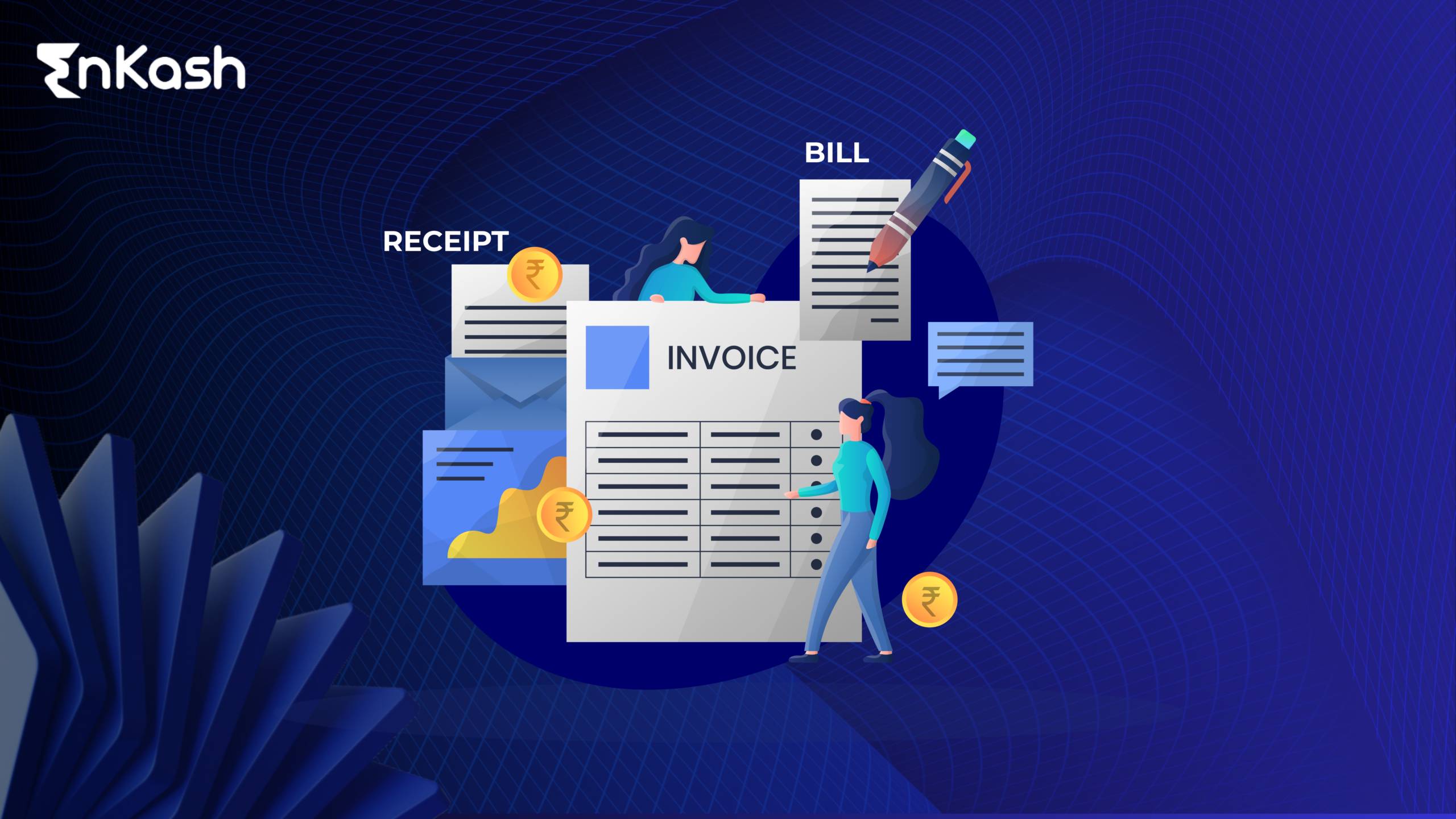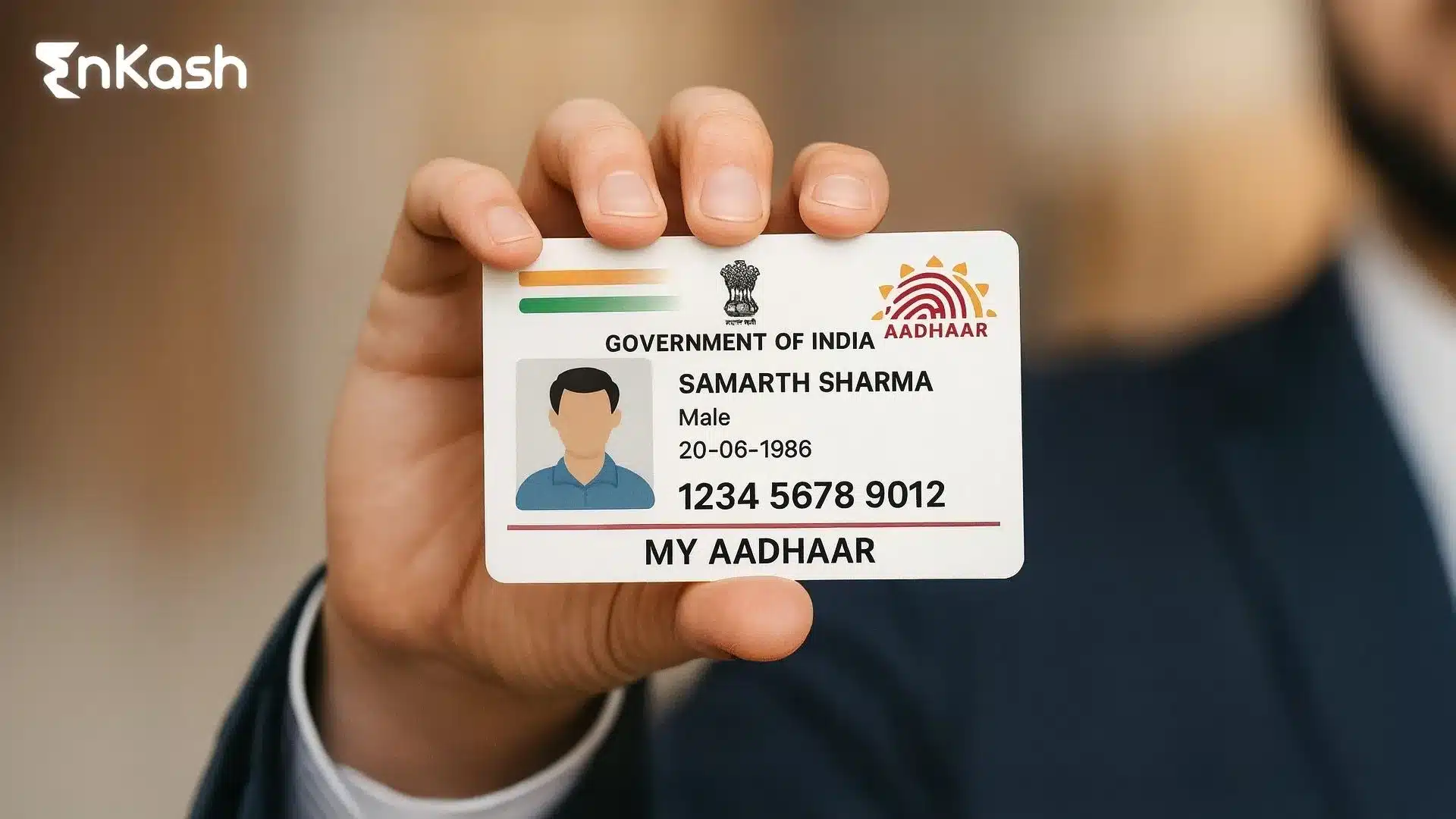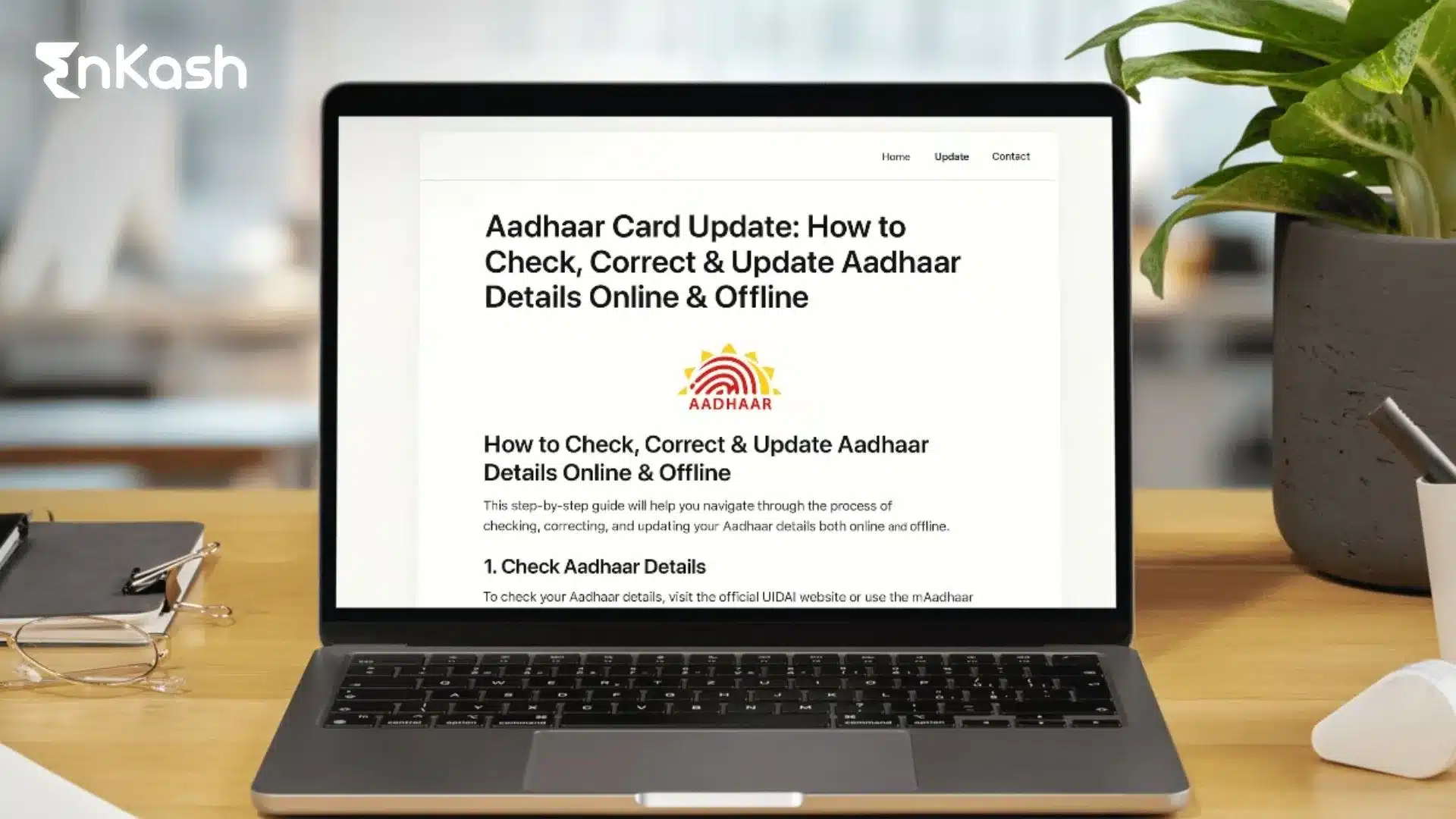Terms like “invoice,” “bill,” and “receipt” are frequently used interchangeably by both businesses and customers in the billing and invoicing process. However, these documents serve distinct purposes, and understanding their differences is essential for anyone involved in commerce, from small business owners to large corporations.
A formal document that a seller issues to a buyer, outlining the goods or services rendered and the price owed, is called an invoice. While comparable, a bill is usually used for informal transactions, particularly in retail contexts. A receipt is a document issued by a seller to a buyer as proof that payment has been made. It confirms that the goods or services have been delivered and that payment has been received.
Difference between Invoice and Bill
Understand the difference between invoice and bill, based on the various aspects of the billing and invoicing process as given below:
Also Read: Invoice Management Solution
1. The Idea & Perspectives
An invoice is a piece of paper, a seller gives to a buyer details of all the goods/services purchased. It functions as a demand for money. As far as the seller is concerned, it is an invoice, whereas, from the point of view of the buyer, this piece of paper is considered a bill, meaning when the buyer receives a document detailing the amount payable for the goods or services rendered, that is called a bill.
2. Time of Issue
An invoice is a document, created before or during the delivery of goods or services and requests payment later. It frequently has stipulations for payment, such as “Net 30 days”, whereas a bill is mostly connected to the payment time. For instance, you get a bill at a restaurant after you eat, and you are supposed to pay it instantly.
3. Contextual Use
An invoice is frequently used in business-to-business (B2B) operations, on the other hand, a bill is used in routine consumer interactions where an instant payment is anticipated or necessary, such as shopping, dining, or utility bills.
4. The Method
An invoice is typically more formal and comprehensive, with a breakdown of things, a payment schedule, and legal terms, inversely a bill may be less formal and just provide the total amount owed and some basic information.
5. Legal Implications
An invoice explicitly states the terms of the transaction, it may occasionally be utilized as legal documentation in the event of a payment dispute, whereas a bill, although equally significant is essentially a payment request and cannot contain all the details that are present in an invoice.
Simplify Your Invoice Management
Difference between Bill and Receipt
Understand the difference between bill and receipt, based on the various aspects of the billing and invoicing process as given below:
1. The Idea & Perspectives
A bill is a document that represents a request for payment from the seller to the buyer. It signifies the amount the buyer owes for goods or services provided. From the seller’s perspective, it is a demand for payment, while from the buyer’s perspective, it is an obligation to pay, whereas a receipt is proof that payment has been made. It acknowledges that the buyer has fulfilled their payment obligation. From the seller’s perspective, a receipt confirms that the payment has been received, and from the buyer’s perspective, it serves as evidence of the transaction and payment.
2. Time of Issue
A bill is issued before or when providing goods or services. It acts as a payment request, indicating the amount the buyer needs to pay for the goods or services received, whereas a receipt is issued after the payment has been made. It serves as a record that the transaction has been completed and payment has been received.
3. Contextual Use
Bills are commonly used in situations where immediate payment is required, such as in retail stores, restaurants, or when receiving services. It is typically used in consumer-facing transactions, on the other hand, receipts are used across various contexts, from retail purchases to large business transactions. They are provided to confirm payment and are often used for record-keeping, returns, and tax purposes.
4. The Method
A bill usually contains basic details such as the total amount due, a brief description of the goods or services, and payment instructions. It may be less formal and more straightforward, particularly in consumer transactions, inversely a receipt typically includes more detailed information, such as the total amount paid, the method of payment, a detailed list of items or services purchased, and the date of the transaction. It serves as a formal record of the completed payment.
5. Legal Implications
While a bill is an important document for requesting payment, it may not have as strong legal standing as an invoice. It is essentially a demand for payment and may not include all the detailed terms of the transaction, and a receipt has legal significance as proof of payment. It can be used in disputes, returns, and for tax documentation. It confirms that the buyer has fulfilled their financial obligation, making it a crucial document for both parties in the transaction.
Invoice vs. Receipt vs. Bill: Key Differences
While invoices, bills, and receipts are all related to financial transactions, they serve different purposes and are used in different contexts. Here is a table with a breakdown of the basic differences:
Basis |
Invoice |
Bill |
Receipt |
Purpose |
A formal payment request is issued by the seller to the buyer, usually for future payment. |
A request for immediate payment is typically issued at the time the goods or services are provided. |
Proof of payment, confirming that the transaction has been completed and payment has been received. |
Timing |
Issued before or after the goods/services are provided, depending on the agreement between the parties. |
Issued at the time of the transaction, often requiring immediate payment. |
Issued after payment has been made, serving as confirmation. |
Detail |
Usually contains detailed information about the transaction, including payment terms and conditions. |
Generally contains less detail, focusing on the total amount due and basic transaction information. |
Contains information confirming the transaction, including the total amount paid and the payment method. |
Legal Implications |
A legally binding document that can be used in disputes over payment terms or amounts. |
May not be as detailed or legally binding as an invoice but still serves as a request for payment. |
Acts as proof of payment and is often required for legal purposes such as returns, exchanges, or tax documentation. |
Usage |
Commonly used in B2B transactions, where payment is often deferred. |
Commonly used in retail and service industries, where immediate payment is required. |
Used in virtually all transactions as proof of payment. |
Document Structure |
Includes header, buyer and seller info, itemized list, payment terms, and total amount due |
Includes date, total amount due, seller information |
Includes date, total amount paid, payment method, seller information |
Role in Accounting |
Used to document sales and manage cash flow |
Used to record sales, provide proof of income, and for tax purposes |
|
Record Keeping |
Essential for financial records, audits, and tax filings |
Important for day-to-day financial management |
Crucial for record-keeping, returns, and tax audits |
Invoice
An invoice is a document provided to a buyer when goods/services are purchased. It is a detailed transaction record, that includes the quantity, price, and goods sold with relevant taxes, rebates, or other charges. It’s an important document to keep a record of business operations.
Invoices are a source document in business accounting. Enterprises use invoices for several reasons, such as tracking sales, requesting quick payment from customers, and keeping inventory records for enterprises.
Types of Invoices
Invoice management is a vital component of corporate operations, and based on the firm’s needs, many forms of invoices can be used. The following are a few of the most typical invoice types:
- Standard Invoice
The most fundamental kind of invoice contains information on the customer and seller along with the item’s description, price, and payment terms.
- Recurring Invoice
This kind of invoice is utilized when a company needs to bill a customer regularly, such as monthly or quarterly for supplies of goods or services.
- Proforma Invoice
Before delivering goods or services, a proforma invoice is an initial invoice submitted to the buyer. It acts as a formal offer and gives the buyer an idea of the transaction’s projected cost.
- Commercial Invoice
Designed for cross-border transactions, this invoice type contains information about the items, including their value, country of origin, and harmonized system code.
- Credit Invoice
A credit invoice is generated when a client returns items or there is an error in an earlier invoice. It lowers the customer’s outstanding balance by acting as a credit memo.
Bill
An accounting record that outlines the cost a customer must pay for a commodity or service they have acquired is called a “bill.” It also functions as a payment reminder. A bill is generated before the money is received and is used immediately.
Types of Bills
Different bills may come up in a business’s daily activities. Typical varieties include some of the following:
- Purchase Bills
A vendor or supplier will issue these bills to demand payment for products or services purchased.
- Utility Bills
Utility companies issue these bills to the end consumer to get paid for services rendered—such as gas, electricity, or water.
- Rent Bills
Landlords and property managers send these bills to compel payment for rent or lease obligations.
- Credit Card Bills
Credit card issuers send out these bills to collect money for purchases made with the card.
- Tax Bills
These are the bills that the tax authorities issue to collect the taxes that the company owes.
- Medical Bills
Medical providers send these bills to a firm or its workers to collect payment for healthcare services rendered.
- Subscription Bills
Businesses that offer media or software as a subscription service are the ones who send out these bills.
Receipt
A receipt acts as a proof of purchase. It provides details about the parties involved in the transaction, the items bought, the date and amount of payment, and other necessary information.
A receipt is a record that a vendor gives a customer as evidence of payment. It confirms that a payment has been received and usually contains transactional information. Receipts serve as evidence of transactions, aiding in financial tracking and record-keeping for both parties.
Components of a Receipt
- Seller’s Information: Name, address, and phone number of the company or person selling the goods or services.
- Buyer’s Information: Name or company name of the person sending the money.
- Date and Time: The transaction’s precise date and time.
- Description: Brief breakdown of the products/services you purchased
- Payment Specifics: The amount paid, the payment mode used, and the transaction ID.
Conclusion
Billing and invoicing is an important workflow in any business, and to avoid any problems or discrepancies, it is essential to clearly understand the meaning of such terms. These processes are the primary source to keep track of the business cash in-flow and out-flow, so any gap in data or confusion between these terms can create a lot of mess for the accounting department, and ultimately for the business. So make sure to read the complete blog so that you can easily distinguish one from the other.
Frequently Asked Questions
Can an invoice be used as a receipt?
No, an invoice and a receipt serve different purposes and cannot be used interchangeably. An invoice is a payment request that details the amount a buyer owes for goods or services provided. A receipt, on the other hand, is proof that payment has been made. While an invoice asks for payment, a receipt confirms that the payment has been received.
What is the difference between an invoice, receipt, and statement?
Invoice: A document issued by the seller to the buyer, requesting payment for goods or services provided. It includes details of the transaction and payment terms.
Receipt: A document issued after payment has been made, serving as proof that the buyer has fulfilled their payment obligation.
Statement: A summary of all transactions between a buyer and seller over a certain period, showing outstanding balances. It includes invoices issued, payments received, and any credits applied but does not request payment.
What is the difference between invoice, PO, and receipt?
Invoice: A document requesting payment for goods or services provided. It details the items sold, the amount due, and payment terms.
Purchase Order (PO): A document issued by the buyer to the seller, indicating the buyer’s intent to purchase goods or services. It outlines the terms of the purchase, such as price, quantity, and delivery date, but does not request payment.
Receipt: A document provided by the seller after payment has been received, confirming the transaction and payment.
Why is a receipt called a bill?
A receipt is sometimes informally referred to as a bill, especially in certain contexts or regions, because it represents a record of payment. However, technically, a bill is a payment request, while a receipt is proof of payment. The term “bill” in this context is colloquial and not used in formal accounting practices.
Is a receipt a bill or invoice?
A receipt is neither a bill nor an invoice. It is a distinct document that serves as proof of payment, issued after a bill or invoice has been paid. While a bill or invoice requests payment, a receipt confirms that payment has been received.
Is a receipt equal to an invoice?
No, a receipt is not equal to an invoice. An invoice is a document requesting payment, issued before payment is made, while a receipt is issued after payment as proof that the transaction has been completed.
What is the difference between a bill of supply and a tax invoice?
The difference between a bill of supply and a tax invoice is as follows:
Bill of Supply: A document issued by a supplier who is registered under GST but is not liable to charge tax on the goods or services supplied. This is typically used for exempt goods/services or by suppliers under the composition scheme.
Tax Invoice: A document issued by a supplier who is liable to charge GST on the goods or services provided. It includes details such as the amount of tax charged and is used for claiming input tax credit. The tax invoice is essential for transactions involving taxable goods or services.
Is the bill a legally binding document?
Yes, a bill is a legal document. The non-fulfillment of bill payment can lead to serious legal consequences basis the terms and conditions agreed upon.
Is it important to keep receipts?
Keeping receipts helps in record-keeping, exchanges, and returns. It is also proof of payment if any dispute arises. They help in accounting and taxes.
Can an invoice be considered as proof of payment?
An invoice cannot be considered as proof of payment as it is a request to collect payment.








